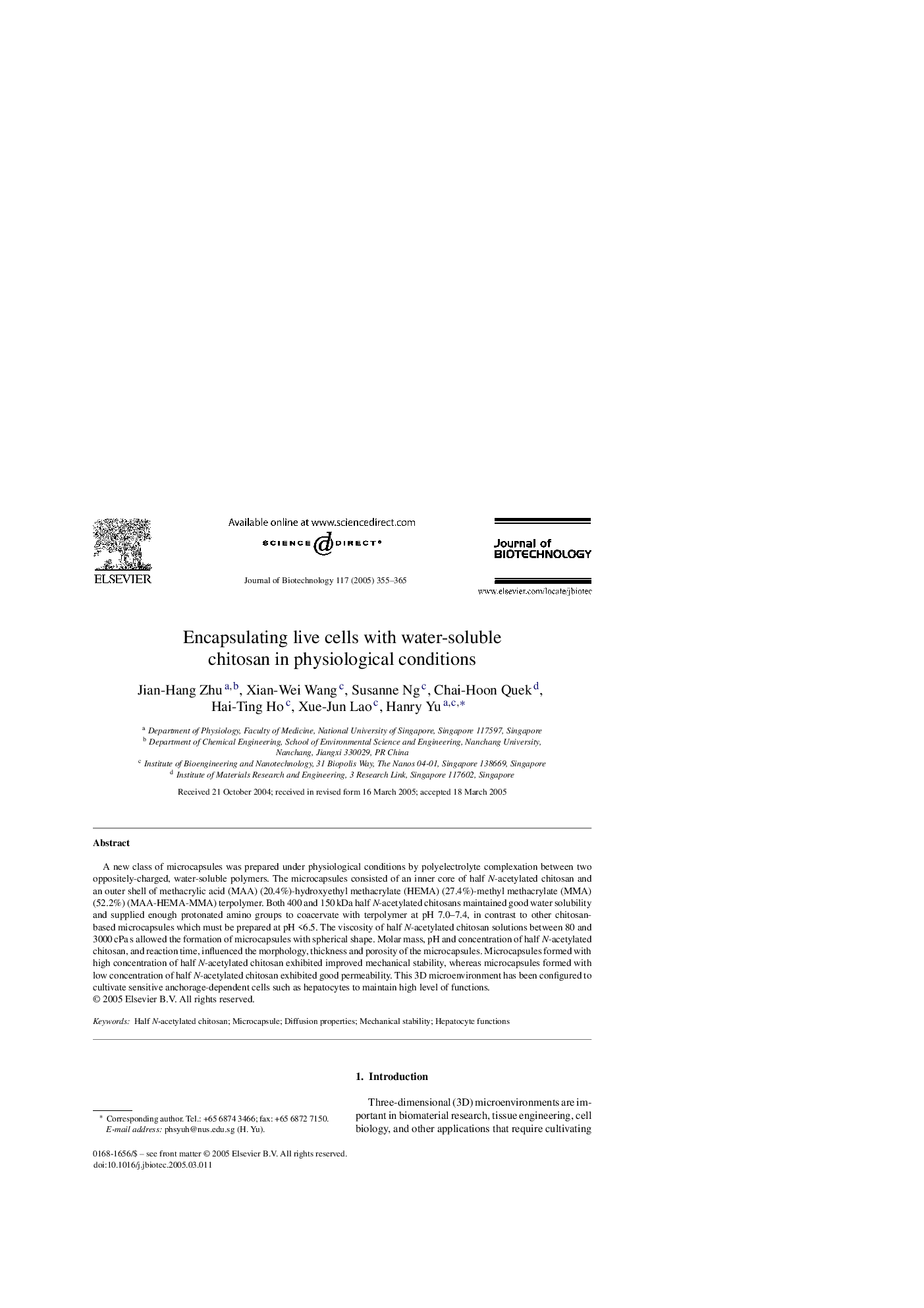| Article ID | Journal | Published Year | Pages | File Type |
|---|---|---|---|---|
| 9604368 | Journal of Biotechnology | 2005 | 11 Pages |
Abstract
A new class of microcapsules was prepared under physiological conditions by polyelectrolyte complexation between two oppositely-charged, water-soluble polymers. The microcapsules consisted of an inner core of half N-acetylated chitosan and an outer shell of methacrylic acid (MAA) (20.4%)-hydroxyethyl methacrylate (HEMA) (27.4%)-methyl methacrylate (MMA) (52.2%) (MAA-HEMA-MMA) terpolymer. Both 400 and 150 kDa half N-acetylated chitosans maintained good water solubility and supplied enough protonated amino groups to coacervate with terpolymer at pH 7.0-7.4, in contrast to other chitosan-based microcapsules which must be prepared at pH <6.5. The viscosity of half N-acetylated chitosan solutions between 80 and 3000 cPa s allowed the formation of microcapsules with spherical shape. Molar mass, pH and concentration of half N-acetylated chitosan, and reaction time, influenced the morphology, thickness and porosity of the microcapsules. Microcapsules formed with high concentration of half N-acetylated chitosan exhibited improved mechanical stability, whereas microcapsules formed with low concentration of half N-acetylated chitosan exhibited good permeability. This 3D microenvironment has been configured to cultivate sensitive anchorage-dependent cells such as hepatocytes to maintain high level of functions.
Related Topics
Physical Sciences and Engineering
Chemical Engineering
Bioengineering
Authors
Jian-Hang Zhu, Xian-Wei Wang, Susanne Ng, Chai-Hoon Quek, Hai-Ting Ho, Xue-Jun Lao, Hanry Yu,
